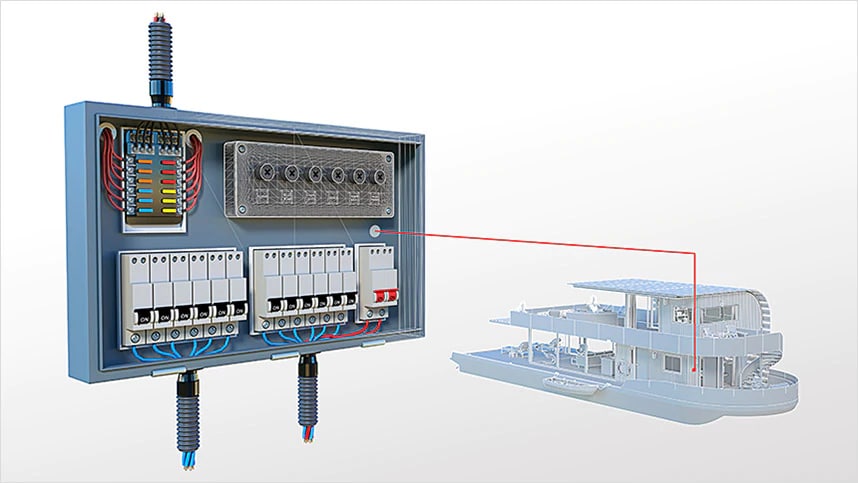Experienced Electrical Engineering Design Services Tailored to Specific Needs
Experienced Electrical Engineering Design Services Tailored to Specific Needs
Blog Article
Ingenious Electrical Design Solutions for Modern Framework
As city atmospheres expand increasingly complex, integrating technologies such as wise grids and renewable energy resources ends up being extremely important. These advancements not only promise to maximize power intake but likewise foster durability versus future needs.
Significance of Innovative Electrical Design
Cutting-edge electric design plays a vital function in modern-day infrastructure, influencing not just efficiency but additionally sustainability. As cities advance and the demand for power increases, the demand for advanced electrical systems becomes vital. These systems need to not just satisfy present demands yet likewise anticipate future development and technological advancements.
A well-executed electrical design can considerably minimize energy intake, consequently lowering functional expenses and minimizing environmental impact. By incorporating renewable resource resources, such as solar panels and wind generators, innovative styles can improve power self-reliance and durability. Wise grid modern technologies permit for real-time tracking and administration of power distribution, optimizing performance and decreasing waste.
Safety is an additional vital element of electrical design. Executing sophisticated innovations and strenuous requirements can reduce risks connected with electrical failings, ensuring a protected atmosphere for organizations and citizens alike. In addition, ingenious styles promote flexibility, enabling frameworks to incorporate arising technologies effortlessly.
Secret Trends in Electrical Design
As the landscape of electric design continues to evolve, a number of crucial fads are forming the future of the sector. One substantial trend is the assimilation of clever technology right into electric systems. The expansion of the Web of Points (IoT) has made it possible for real-time tracking and control of electric devices, enhancing efficiency and assisting in anticipating upkeep.
Another pattern is the expanding emphasis on modular design. This approach permits scalable and adaptable remedies, allowing infrastructure to adapt to altering needs without comprehensive restorations. Furthermore, using sophisticated simulation devices and Structure Info Modeling (BIM) is becoming progressively common, enhancing the design procedure and enhancing cooperation amongst stakeholders.
Additionally, innovations in products scientific research are resulting in the growth of lighter, a lot more long lasting, and energy-efficient components. This innovation is especially vital for high-performance structures and framework tasks.
Lastly, there is a marked change in the direction of data-driven decision-making - residential electrical design. Leveraging data analytics aids developers maximize systems for performance and cost-effectiveness. Together, these patterns symbolize a transformative era in electric design, boosting capability, sustainability, and durability in modern-day facilities
Lasting Energy Solutions
Sustainable power remedies are progressively becoming a vital focus in electrical design, reflecting a broader commitment to ecological obligation and resource effectiveness. These solutions aim to minimize ecological effect while enhancing power usage in different facilities, from residential buildings to large business centers.
One of the leading methods entails the integration of renewable resource resources, such as photovoltaic panels and wind generators, into electrical systems. This not just decreases dependence on nonrenewable fuel sources but likewise improves power strength. In addition, innovative energy storage space systems, such as sophisticated batteries, enable reliable management and circulation of energy, ensuring that excess energy created throughout optimal manufacturing can be utilized during high demand durations.
Furthermore, energy-efficient design techniques are being adopted to enhance total system performance. This consists of using energy-efficient illumination, heating and cooling systems, and wise structure innovations that monitor and adjust energy use based upon tenancy and environmental problems.
Smart Grid Technologies
The execution of sustainable energy solutions normally leads to the exploration of wise grid modern technologies, which play an essential role in improving electric systems. Smart grids utilize progressed interaction technologies and information analytics to enhance the reliability, effectiveness, and sustainability of electrical power circulation. By incorporating electronic technology with traditional grid facilities, these systems help with real-time tracking, automated control, and improved decision-making capacities.
One of the crucial features of wise grids is their ability to accommodate renewable resource resources, such as solar and wind power. This adaptability not only reduces dependence on fossil fuels however also permits a more decentralized power production version. Wise grids enable need response programs, where consumers can adjust their energy use based on real-time pricing, therefore advertising power preservation and decreasing peak tons needs.
Additionally, clever grid technologies improve grid strength by making it possible for quicker recognition and resolution of failures, inevitably minimizing downtime. With predictive maintenance and analytics, utilities can improve and enhance procedures solution delivery. As cities and areas remain to progress, smart grid innovations are vital for developing a efficient and lasting electrical framework that satisfies the demands of modern culture.

Future-Proofing Infrastructure
To make sure long-lasting feasibility and adaptability, future-proofing infrastructure is essential in the rapidly developing landscape of electric design services. As technology advances and power needs change, it is vital that electric systems are made with flexibility in mind. This requires integrating scalable solutions that can fit future upgrades without demanding substantial overhauls.

Furthermore, sustainability needs to be a cornerstone of future-proofed designs. Making use of sustainable power resources, such as solar and wind, and maximizing power effectiveness minimize dependence on fossil gas, straightening with international efforts to battle electrical load calculation climate modification.
Final Thought
By focusing on efficiency, flexibility, and sustainability, these solutions address the advancing needs of energy systems. The assimilation of clever grid technologies and sustainable power options boosts durability and minimizes operational costs.
A well-executed electrical design can considerably decrease power consumption, therefore decreasing functional costs and reducing ecological effect. By integrating renewable power sources, such as solar panels and wind turbines, innovative designs can boost power freedom and strength. Furthermore, innovative power storage systems, such as advanced batteries, enable efficient administration and distribution of energy, making certain that excess power produced during peak manufacturing can be made use of throughout high need periods.
Wise grids enable need action programs, where consumers can readjust their energy use based on real-time pricing, consequently promoting power preservation and minimizing peak tons demands. (residential electrical design)
As innovation developments and energy needs shift, it is crucial that electric systems are developed with flexibility in mind.
Report this page